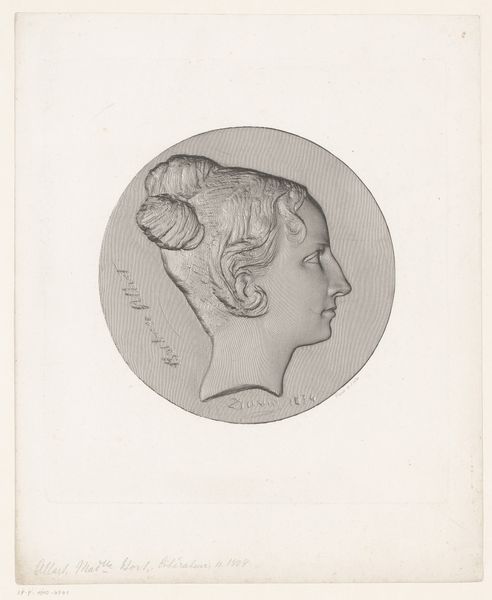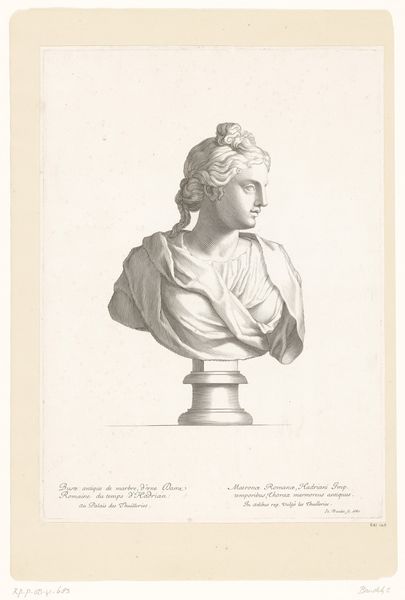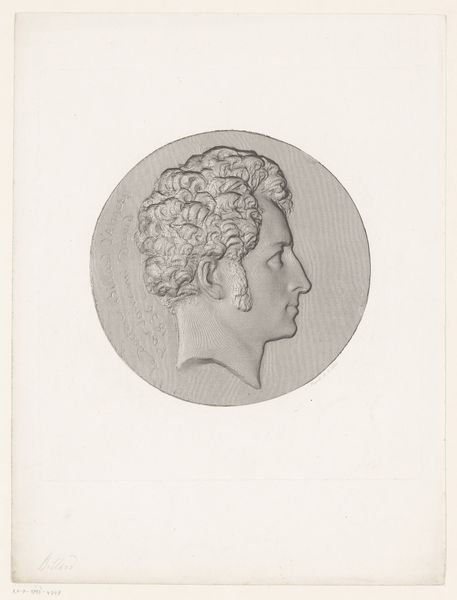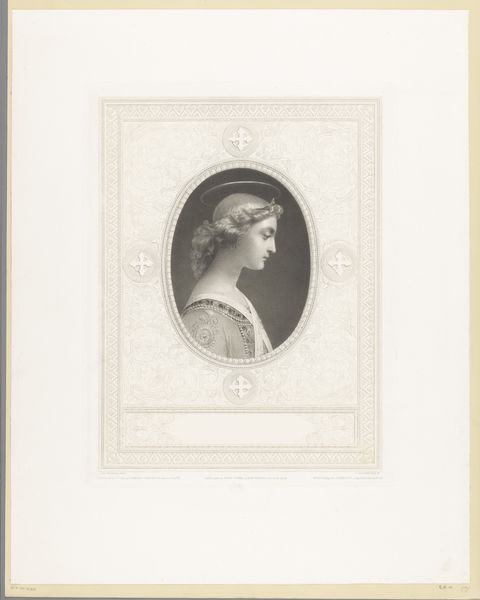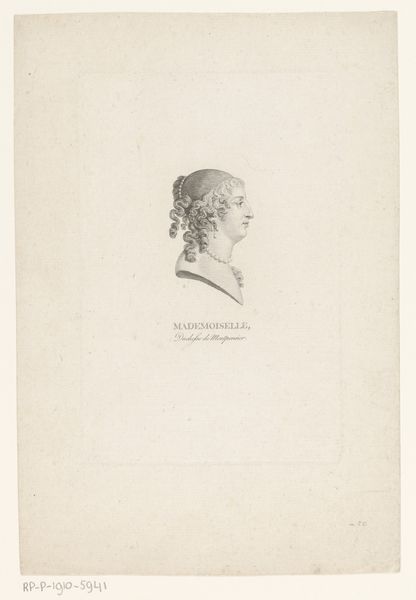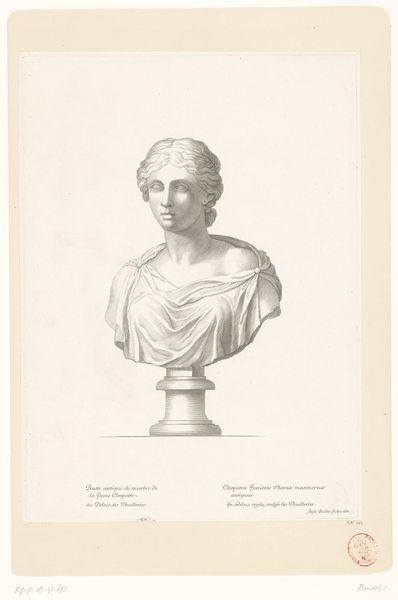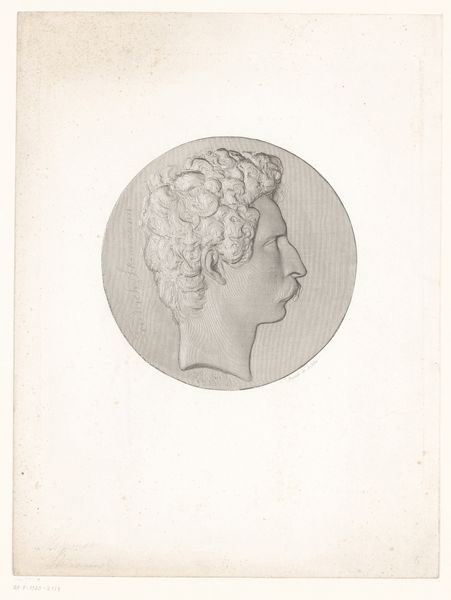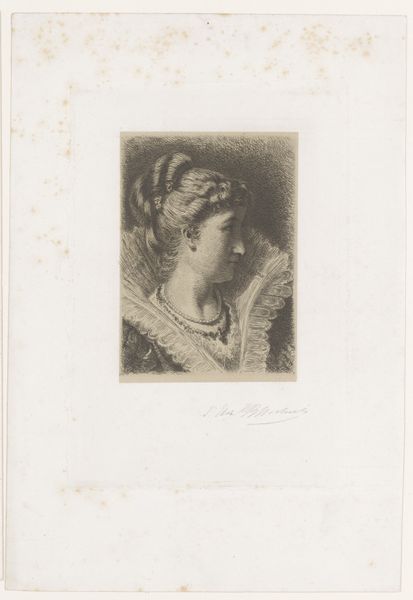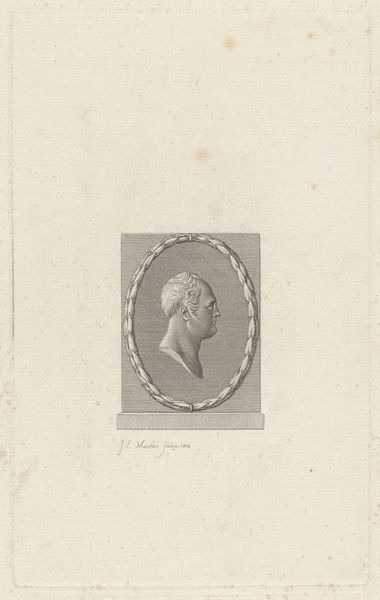
print, engraving
#
portrait
# print
#
pencil drawing
#
history-painting
#
engraving
Dimensions: 158 mm (height) x 110 mm (width) (plademaal)
Curator: This engraving, created in 1868 by A.P. Madsen, depicts Ole Johan Samsøe in profile. Samsøe, a Danish writer and playwright, is presented here within a classical oval frame. What strikes you about it? Editor: Immediately, it's the sense of austerity and classical formality. The clean lines and muted tones evoke a feeling of restrained power, reminiscent of ancient Roman portraiture. There is a tension, almost a conflict, between this stoicism and what I imagine Samsøe might have written. Curator: Yes, it presents a figure rooted in the burgeoning Danish literary and intellectual circles of his time. But what makes it particularly compelling, and indeed somewhat problematic, is its construction of Samsøe as a kind of idealized “great man.” The portrait's clean lines and stoic profile contribute to a visual narrative that reinforces certain power structures of the era. Who was remembered and why? Whose stories were privileged? Editor: Indeed, we often see the visual tropes of neo-classicism employed to establish authority and project a narrative of enlightenment ideals. The very fact that this profile is contained within an oval—a shape frequently associated with commemorative portraiture— speaks volumes. But also, looking closely at Samsøe himself, his very particular wig, suggests the traditions, and the expectations of his time. He is performing a role in society as much as his portrait performs the act of enshrining. Curator: I agree. And when we consider that this print was produced nearly a century after Samsøe’s death, it further complicates the narrative. This isn't just about remembering Samsøe, but also about shaping his image to fit a specific cultural agenda of the mid-19th century, a time when national identity was being actively constructed through such figures. Editor: So it's less about capturing the "true" essence of Samsøe and more about creating a symbol, a historical emblem imbued with the values of the era in which it was made. And perhaps understanding the enduring nature of this symbolic representation grants new ways to think about Samsøe’s continuing place in the historical record. Curator: Exactly. Examining it through a contemporary lens helps us question these constructed narratives. Editor: Absolutely. And that's the lasting value of engaging with historical portraits like these – to examine the image itself, its composition, its period—and the values and stories we still attach to its visual language.
Comments
No comments
Be the first to comment and join the conversation on the ultimate creative platform.
